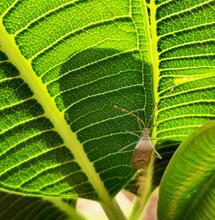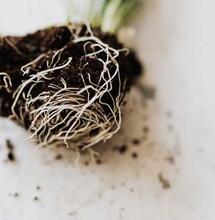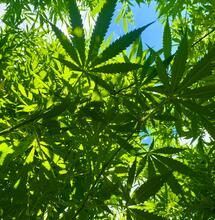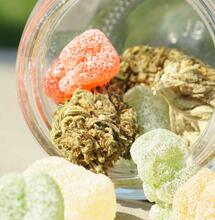Tips for Keeping Cannabis Plants Healthy in Cold Weather

Even when cultivating indoors, as temperatures drop, it's important to monitor your Grow Room to ensure your plants remain healthy and content.
How Can You Keep Your Grow Room Warm During Winter?
Insulation
A grow room with good insulation is essential for maintaining the temperature for your plants. Be mindful of how chilly the room you plan to use gets at night when temperatures decrease. Use a rug on the floor as a form of insulation. If the space you’re converting has heating, be sure to take advantage of it!
Lighting
Indoor HID lights generate a significant amount of heat. Utilize this to your benefit during the winter months. Operate your 'lights on' period at night when temperatures are at their lowest. If your plants are in the vegetative stage at the onset of winter, consider extending the 'lights on' period from 18 to 24 hours.
On the flip side, LED lights may create a different issue, as they don’t emit much heat. An effective solution is to use a grow room heater with a thermostat to maintain a constant temperature. Keep in mind that a heater might dry out the air, so consider investing in a humidistat to regulate your humidifier settings while the heater is active.
Additional Heating
Tube Heaters are adaptable enough to fit most growing areas. They provide a steady heat distribution and are inexpensive to operate.
Tube Heaters lack thermostatic controls. If you prefer a thermostatically regulated option, consider using Filled Radiators. They are compact but efficient enough to achieve optimal temperatures.
Fan Heaters are also an alternative. However, the hot, dry air they produce can decrease humidity and harm plants, potentially halting growth if directed at them for too long. For this reason, use a fan heater only outside the grow room to warm up the surrounding air or direct it towards the intake fan.
Nutrients
The temperature for mixing and storing nutrients in a water tank should stay between 18-21°C. If it goes too low, it can hinder absorption and slow growth. Conversely, if it gets too warm, oxygen levels can drop, causing plants to be more vulnerable to diseases like Pythium. A water heater can be placed in the water tank to maintain pre-mixed nutrient solutions at the ideal temperature.
Intake Fan
Make sure that your intake fan is sourcing air from an indoor environment. Air drawn from inside will be warmer and richer in CO2. During the vegetative growth and early flowering stages, slightly reduce the fan's speed to allow warm air to circulate for longer. In the mid to late flowering stage, however, the presence of undesirable odors may require the extraction fan to operate at full capacity. In this scenario, you may need to consider additional heating options.
Monitor Temperature
Plants prefer warmer air and thrive at temperatures between 25-28°C during "lights on" and around 18-21°C during "lights off." This is crucial when using a hydroponic system, as water does not provide much insulation like soil or coco coir. A Digital Thermometer is ideal for watching the temperature.
Plant Growth and Cold Temperatures
Plants can detect the approach of winter. As temperatures begin to dip, you may notice a slowdown in growth. Temperatures falling below 18°C can significantly inhibit plant development. If it drops below 15°C, the plant may experience shock and stop growing altogether. In such cases, it could take 2-3 weeks for your plants to return to their normal state, with the possibility that they may not recover at all.
What Happens When Plants Experience Shock?
When a plant undergoes shock, it perceives a threat to its roots. An abrupt temperature change can trigger this response, leading the plant to shut down its systems. It halts growth and directs its energy toward self-protection and repairing its roots, which are crucial for its survival. It will remain dormant until the perceived threat, like the cold, has passed.
What to Do if Your Plants are Subjected to Cold
Move the plant to a warmer location, such as under grow lights or a propagator. Avoid exposing it to extreme heat, as this may worsen its condition. Only gentle warmth is needed.
Carefully clean the leaves to enhance light absorption.
Trim away any dead or dying leaves to prevent the plant from wasting energy on them.
Water only when necessary, and use water at room temperature.
Stay vigilant for signs of mold, fungus, or pests.
Handle repotting with care, as roots are fragile.
Assess the roots for rot; if they appear brown or mushy, gently cut them away as they are beyond recovery.
Symptoms of Plants Suffering from Cold Weather Shock
Depending on the severity of exposure, it may take 1-2 weeks for full damage to be apparent.
Cold damage may manifest itself through several of the following signs:
• Drooping or wilting leaves or small branches
• Soft or blackened foliage
• Burn-like blemishes on flowers and leaves
• Cracks in woody stems or trunks
• Excessively loose root systems
Once temperatures return to normal, prune any affected leaves, shoots, and branches.
What Happens When Plants Go into Shock?
When a plant goes into shock, it perceives a threat to its roots. An extreme temperature shift can serve as an alarming signal, prompting the plant to react.
More From Soft Secrets:
Cannabis Lighting: Guide to PAR, PPFD, and DLI


.png)





